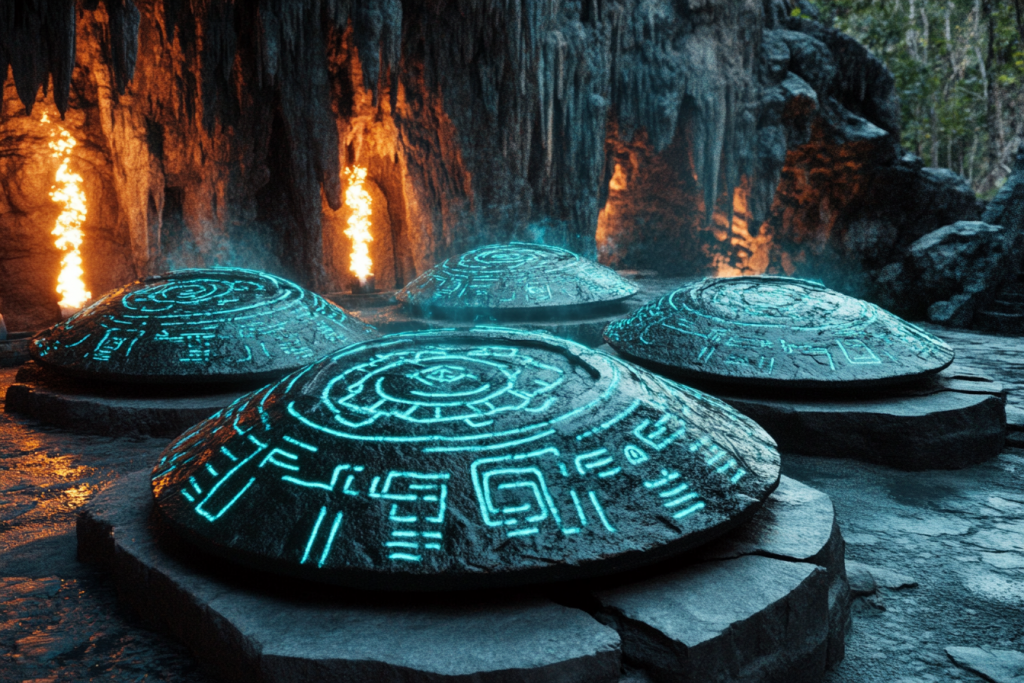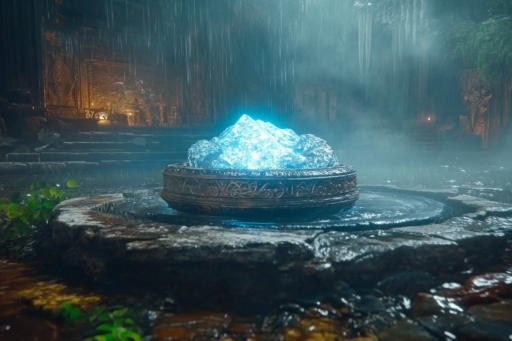
Throughout history, astonishing discoveries have surfaced in the most unexpected places—artifacts that challenge everything we think we know about human civilization. From tools seemingly older than mankind itself to mysterious objects with technology far beyond their time, these relics raise unsettling questions. Were ancient civilizations more advanced than we realize? Have we overlooked entire chapters of history? Or is there something even stranger at play? As we explore these baffling finds, prepare to question the very fabric of our past.
The London Hammer: A Modern Artifact in Ancient Rock

In the 1930s, a couple in London, Texas, stumbled upon an unusual rock with a wooden handle sticking out of it. Upon closer examination, the hammer appeared to be encased in limestone estimated to be over 400 million years old—long before humans were supposed to exist. The metalhead, composed of nearly pure iron, shows signs of advanced metallurgy, yet its presence in such ancient rock defies explanation. Was this an out-of-place artifact, or did it hint at something much older than recorded history?
The Antikythera Mechanism: An Ancient Computer Beyond Its Time

Discovered in a Roman shipwreck off the coast of Greece, the Antikythera Mechanism stunned researchers. This complex gear-driven device, dating back over 2,000 years, is often referred to as the world’s first analog computer. Its intricate design, used for tracking celestial movements, suggests knowledge far beyond its era, rivaling clockwork precision seen only in devices thousands of years later. How did such advanced technology exist in the ancient world, and who truly understood its power?
The Salzburg Cube: A Metal Object from the Primordial Past

In 1885, a strange iron cube was found inside a block of coal in Austria. This discovery was perplexing—geologists dated the coal seam to over 60 million years old. The smooth, precise cuts and manufactured appearance of the Salzburg Cube suggest it was artificially shaped, yet there were no known civilizations capable of such metallurgy at the time. Was this evidence of a lost, forgotten technology?
The Baghdad Battery: A Forgotten Source of Electricity?

Unearthed in Iraq, the so-called “Baghdad Battery” consists of a clay jar with a copper cylinder and an iron rod. Some researchers believe it may have functioned as an ancient electrochemical cell, capable of producing electricity. If true, it raises a tantalizing question: What did ancient civilizations need electricity for? Were they more technologically advanced than we give them credit for?
The Piri Reis Map: A 16th-Century Map of an Unexplored Continent

Drawn in 1513 by the Ottoman admiral Piri Reis, this map features an accurate depiction of Antarctica—centuries before it was officially discovered. Even more astonishing, it appears to depict the continent’s coastline free of ice, a condition last seen over 6,000 years ago. How could a 16th-century cartographer have such precise knowledge of a landmass buried under ice for millennia?
The Coso Artifact: A Spark Plug in Ancient Stone

In 1961, three rock hunters in California cracked open a geode, only to find a modern-looking spark plug inside. The surrounding rock appeared to be at least 500,000 years old, making its presence a near impossibility. If it wasn’t a hoax, could it be evidence of ancient technology—or even time travel?
The Fuente Magna Bowl: Sumerian Writing in South America

A large stone bowl, covered in Sumerian cuneiform script, was discovered near Lake Titicaca in Bolivia. Mainstream history tells us that the Sumerians never traveled to South America, yet this artifact suggests otherwise. Did an ancient civilization with seafaring capabilities cross the Atlantic thousands of years before Columbus?
The Voynich Manuscript: A Book Written in an Unknown Language

This mysterious book, filled with cryptic illustrations and text in an undeciphered language, has baffled scholars for centuries. Found in Italy in the early 20th century, the manuscript dates back to the 1400s, yet its contents remain an enigma. Was it a lost alchemical text, an alien language, or something even stranger?
The Aiud Aluminum Wedge: Aerospace Technology in Ancient Times?

An aluminum artifact resembling a modern aircraft component was discovered in Romania in 1974—buried alongside mammoth bones. Since aluminum wasn’t industrially refined until the 1800s, its presence in an ancient deposit raises disturbing questions. Could it be a remnant of an advanced prehistoric civilization, or something not of this world?
The Dropa Stones: Evidence of an Otherworldly Encounter?

Found in a remote cave in China, these disk-shaped stones contain intricate carvings and hieroglyphics that some researchers claim tell the story of an extraterrestrial crash landing thousands of years ago. Mainstream historians dismiss them as mere legend, but their unusual properties—such as a strange metallic composition—continue to puzzle experts. Were these records of an ancient alien visitation?
The Ica Stones: Images of Dinosaurs in the Hands of Man

Hundreds of carved stones found in Peru depict images of humans coexisting with dinosaurs. Mainstream science tells us this is impossible, yet these stones—some of which show advanced surgical procedures—challenge everything we know. Are they proof of an ancient, forgotten knowledge, or merely an elaborate hoax?
Lost Time, Forgotten Truths

History is written by those who uncover it, but what happens when relics defy our understanding of the past? These artifacts suggest there may be entire chapters of human civilization still waiting to be rewritten. Whether the result of lost knowledge, misplaced history, or something more unexplainable, they remind us that the past is far stranger than we ever imagined. What else remains hidden beneath the sands of time?





